Turathium Rarity Scale - TRS
Item
- Term
- Definition
-
1 - UQ - Unique: One known survivor.
-
2 - UN - Nearly Unique: 2 to 50
-
3 - RX - Extremely Rare: 51 to 250
-
4 - RV - Very Rare: 251 to 500
-
5 - RA - Rare: 501 to 1000
-
6 - SV - Very Scarce: 1001 to 2500
-
7 - SC - Scarce: 2501 to 5000
-
8 - CO - Common: 5001 to 15000
-
9 - CV - Very Common: Over 15000
-
0 - KZ - No Known Survivors: Zero known survivors.
-
10 - KU - Unknown: Unknown or undetermined number of survivors.
-
TRS 3, TRS RX or “TRS Extremely Rare” are equally valid notations to describe an item's rarity when its’ known number of survivors is between 51 and 250 inclusive.
-
TRS RA or simply RA, either is used to specify an item rarity when it has an estimated number of survivors between 501 and 1000.
-
SV or TRS 6, either notation can label an item rarity when it has an estimated number of survivors between 1001 and 2500.
-
TRS UN<25 is used when the known number of survivors is less than 25.
-
TRS RX<100 is used when the maximum number of survivors is less than 100.
-
CO<10000 is used when the known number of survivors is less than 10000.
-
TRS UN=8 is used when the known number of survivors is equal to 8.
-
RX=75 is used when the known number of survivors is equal to 75.
-
TRS is an odd points scale, it has a distinct median-point. Obviously, the median point of the TRS scale is term 5 or RA-Rare.
-
Quantitative. TRS is number-based.
-
Precise. Using operators, you will be able to describe your item rarity as accurately as you can.
-
Easy to recall and use notation. According to your preference, you can refer to its terms using numbers, letter's abbreviations or labels.
- 1 - UQ - فريد: ناج واحد معروف.
- 2 - UN - فريد تقريبًا: من 2 إلى 50
- 3 - RX - نادر للغاية: 51 إلى 250
- 4 - RV - نادر جدًا: 251 إلى 500
- 5 - RA - نادر: 501 إلى 1000
- 6 - SV - شحيح جدًا: 1001 إلى 2500
- 7 - SC - شحيح: 2501 إلى 5000
- 8 - CO- شائع: 5001 إلى 15000
- 9 - CV - شائع جدًا: أكثر من 15000
- 0 - KZ- صفر ناجون: لا يوجد ناجون معروفون.
- 10 - KU - غير محدد: عدد غير محدد من الناجين.
- "TRS RX" أو "TRS 3" أو "TRS Extremely Rare" هي تدوينات صحيحة لوصف ندرة العنصر عندما يكون العدد المعروف للناجين من هذا العنصر بين 51 و 250.
- الندرة: RA، لتسمية الندرة عندما يكون العدد التقديري للناجين بين 501 و 1000.
- الندرة: SV أو الندرة: 6 ، يمكن لأي من الترميزين تعيين ندرة العنصر عندما يكون العدد تقديري للناجين بين 1001 و 2500.
- نوصي بتضمين "TRS" مع الإحالة الأولى لمقياس تراثيوم للندرة. ولكن، يمكنك تخطي ذلك عند تدوين الإحالات اللاحقة.
- يتم تعيين UN<25 عندما يكون العدد المعروف للناجين أقل من 25.
- يتم تعيين RX<100 عندما يكون الحد الأقصى لعدد الناجين أقل من 100.
- يتم تعيين TRS CO<10000 عندما يكون العدد المعروف للناجين أقل من 10000.
- TRS UN= 8 يتم تخصيصها عندما يكون العدد المعروف للناجين يساوي 8.
- يتم تعيين RX = 75 عندما يكون العدد المعروف للناجين يساوي 75.
- كمي. يعتمد المقياس على الأرقام ، ومع ذلك فإن نقاط المقياس لها وصف نوعي.
- من السهل تذكر نقاط المقياس الوصفية.
- من السهل كتابة التدوين. اعتمادًا على بناء الجملة ، يمكنك استخدام أي من تنسيقاته الثلاثة: الأرقام أو الأحرف أو الصفات.
- مرن. باستخدام عوامل التشغيل ، يمكنك وصف ندرة العنصر بالدقة التي تريدها.
- Is Referenced By
- Date
- Has Version
- Creator
- Rights Holder
- Bibliographic Citation
-
Turathium Rarity Scale - TRS
-
ar
مقياس تراثيوم للندرة
-
The Turathium Rarity Scale™ (TRS - pronounced as Tras) is a quantitative 9 terms sequence used to specify a collectible’s rarity based on the estimated count of examples in existence (number of survivors).
-
en
The Turathium Rarity Scale™ (TRS - pronounced as Tras) is a quantitative 9 terms sequence used to specify a collectible’s rarity based on the estimated count of examples in existence (number of survivors). Each TRS term specifies a numeric range and is labeled with a digit, two capital letters notation and an adjective describing the rarity of an item.
Terms of The Turathium Rarity Scale
In addition, we define the following 2 notations to describe cases of rarity that are off the TRS scale:
The TRS Notation
To describe the rarity of an item, locate the term that corresponds to the estimated number of survivors that you want and use the TRS acronym followed by a space and the corresponding term number, two letters notation or the descriptive adjective.
Examples of use:
If your context permits, you can skip including TRS in your rarity notations.
Using Operators with TRS Notations
A TRS notation can be suffixed with either the "<" or the "=" operator and a number to specify precisely the number of survivors of an item.
Declaring an accurate upper bound within a TRS term
In case the maximum number of survivors of an item is accurately determined, you insert the "Less Than" sign (<) after the corresponding TRS notation and type the number.
Examples of use:
Declaring a precise value of survivors within a TRS term
To describe the rarity of the item precisely in case the number of survivors of an item is accurately determined, you insert the "Equal" sign (=) after the corresponding TRS notation and type the number.
Examples of use:
Features of TRS
-
en
| Estimated Number of Survivors | TRS Rarity Notation | ||||
| From | To | Symbol | Term | Label | Remark |
| 1 | 1 | UQ | 1 | Unique | One known survivor |
| 2 | 50 | UN | 2 | Nearly Unique | |
| 51 | 250 | RX | 3 | Extremely Rare | |
| 251 | 500 | RV | 4 | Very Rare | |
| 501 | 1000 | RA | 5 | Rare | |
| 1001 | 2500 | SV | 6 | Very Scarce | |
| 2501 | 5000 | SC | 7 | Scarce | |
| 5001 | 15000 | CO | 8 | Common | |
| 15001 | ∞ | CV | 9 | Very Common | Over 15000 survivors |
| 0 | 0 | KZ | 0 | Zero Survivors | No known survivors |
| ? | ? | KU | 10 | Unknown |
Unknown or undetermined number of survivors |
-
ar
مقياس تراثيوم للندرة (TRS - يُنطق مثل Tras) هو مقياس كمّي مكوّن من 9 نقاط يستخدم لتحديد ندرة المقتنيات بناءً على العدد المقدّر للأمثلة الموجودة ، أو ما نسميه العدد المقدر للناجين.
تتم الإشارة إلى كل نقطة من نقاط TRS التسع برقم أو ترمّز بحرفين لاتينيين كبيرين أو بصفة تصف ندرة العنصر. تحدد نقطة المقياس نطاقًا رقميًا يتوافق مع العدد المقدر للناجين من العنصر المعني.
جدول مقياس تراثيوم للندرة
تحتوي القائمة أدناه على 9 إدخالات ، كل منها يتوافق مع نقطة في المقياس. النطاق العددي بجوار كل إدخال يحدد الحدود الدنيا والعليا للأعداد المعروفة للناجين من عنصر ما.
ملاحظات:
نحدد الرموز التالية لوصف حالات الندرة الخارجة عن مقياس TRS.
ترميز TRS
لوصف ندرة عنصر من خلال TRS ، استخدم الاختصار المكون من ثلاثة أحرف "TRS" متبوعًا بمسافة وتدوين حرفين أو التسمية الوصفية أو الرقم المقابل.
يمكن تخطي تضمين "TRS" في الترميز إذا كان الوصف واضحًا.
أمثلة على الاستخدام
استخدام العوامل مع ترميز TRS
يمكن أن تلحق ترميز TRS إما بالعامل "<" أو بالعامل "=" متبوعًا برقم لتحديد مدى ندرة العنصر بدقة.
التصريح عن حد أعلى ضمن نطاق TRS
لتحديد الحد الأقصى لعدد الناجين من عنصر ما بدقة ، يمكنك إلحاق هذا الرقم المسبوق بعلامة "أقل من" (<) بترميز TRS المقابل لوصف ندرة العنصر.
أمثلة على الاستخدام:
التصريح عن القيمة الدقيقة لعدد الناجين ضمن نطاق TRS
في حالة تحديد عدد الناجين من أحد العناصر بدقة ، يمكن إلحاق هذا الرقم مسبوقًا بعلامة المساواة (=) بترميز TRS المقابل لوصف ندرة العنصر.
أمثلة على الاستخدام:
ميزات TRS
TRS هو مقياس نقاط فردي ، وله نقطة وسطية مميزة. من الواضح أن النقطة المتوسطة لـ TRS هي نقطة المقياس 5 المقابلة لتسمية RA (نادر).
-
ar
| العدد المقدر للناجين | رموز مقياس تراثيوم للندرة | ||||
| من | إلى | رمز | نطاق | الوصف | ملاحظة |
| 1 | 1 | UQ | 1 | فريد | ناج واحد معروف |
| 2 | 50 | UN | 2 | فريد تقريبًا | |
| 51 | 250 | RX | 3 | نادر للغاية | |
| 251 | 500 | RV | 4 | نادر جدًا | |
| 501 | 1000 | RA | 5 | نادر | |
| 1001 | 2500 | SV | 6 | شحيح جدًا | |
| 2501 | 5000 | SC | 7 | شحيح | |
| 5001 | 15000 | CO | 8 | شائع | |
| 15001 | ∞ | CV | 9 | شائع جدًا | أكثر من 15000 ناج |
| 0 | 0 | KZ | 0 | صفر ناجون | لا يوجد ناجون معروفون |
| ? | ? | KU | 10 | غير محدد | عدد غير محدد من الناجين |
-
4/2/2021
-
Version 0.6 - 4/2/2021
-
Concept by Abdallah Absi is licensed under Creative Commons Attribution-NonCommercial-NoDerivatives 4.0 International License CC BY-NC-ND 4.0 based on work at ©Turathium http://turathium.com. Permissions beyond the scope of this license may be available at http://turathium.com/s/intro/page/termsofuse
- Resource class
- Turathium Term
Linked resources
| Title | Class |
|---|---|
 CO - Common (TRS 8) CO - Common (TRS 8) |
NumismaticTerm |
 CV - Very Common (TRS 9) CV - Very Common (TRS 9) |
NumismaticTerm |
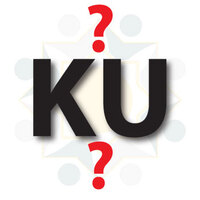 KU - Unknown number of survivors (TRS 10) KU - Unknown number of survivors (TRS 10) |
NumismaticTerm |
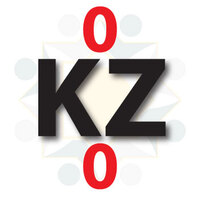 KZ - Zero Known Examples (TRS 0) KZ - Zero Known Examples (TRS 0) |
NumismaticTerm |
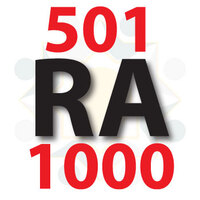 RA - Rare (TRS 5) RA - Rare (TRS 5) |
NumismaticTerm |
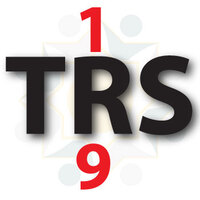 Rarity TRS Rarity TRS |
Concept Scheme |
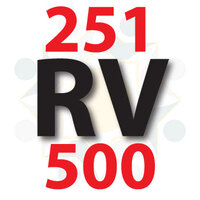 RV - Very Rare (TRS 4) RV - Very Rare (TRS 4) |
NumismaticTerm |
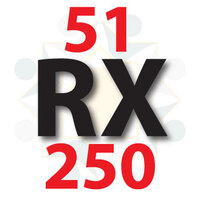 RX - Extremely Rare (TRS 3) RX - Extremely Rare (TRS 3) |
NumismaticTerm |
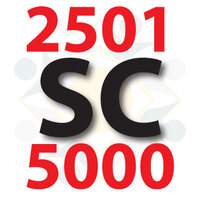 SC - Scarce (TRS 7) SC - Scarce (TRS 7) |
NumismaticTerm |
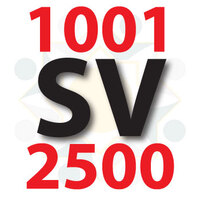 SV - Very Scarce (TRS 6) SV - Very Scarce (TRS 6) |
NumismaticTerm |
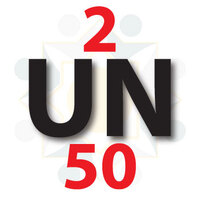 UN - Nearly Unique (TRS 2) UN - Nearly Unique (TRS 2) |
NumismaticTerm |
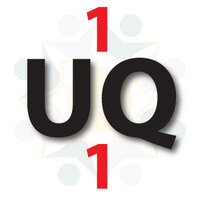 UQ - Unique (TRS 1) UQ - Unique (TRS 1) |
NumismaticTerm |
Comments
No comment yet! Be the first to add one!